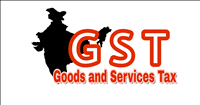Saint Gobain: Reinforcing cultural change
By Venkatachari Jagannathan | 11 Mar 2002
These were the views expressed by Saint Gobain Vetrotex India managing director P Natarajan. He was speaking at a seminar, Reinventing Strategies: Revitalising Businesses, part of Strategix 02, organised by Bharathidasan Institute of Management. The changes could be classified under different heads - structural (closure of departments, transferring employees), process (change in production process by using new technology or stopping production of items, outsourcing of products/services), personnel (job rotation, hiring new hands, retiring older employees) and introduction of new symbols (change in uniform colour), he said.
Managing culture is a top managements task and should not be delegated, he said, narrating his experience in bringing about a cultural change in the Hyderabad-based FGP (the RPG group company, manufacturing reinforced glass fibres). The company was taken over by the Saint Gobain Vetrotex group a couple of years ago.
At the time of the takeover, FGP was a top-down management company with strong departments and a formal communication structure. On the other hand, Saint Gobain was having a strong international network and a professional approach laying premium on performance, while decisions were decentralised. That apart, we had to contend with competition that included an MNC putting up a Greenfield project with a capacity of 30,000 tpa. Our capacity was 8,000, while the Indian market for reinforced glass fibre was around 14,000 tpa.
The problems we faced were the typical Indian chalta hai attitude - not sticking to the time schedules or understanding competitions ferocity, confusing professional and personal relationships, he said.
Soon after taking over the company, Saint Gobain started effecting structural changes. The first step was to network officials and give them email facilities. The managers were asked to work without secretaries, he said. The second step was to close the city office and build a brand-new office inside the factory compound. Devoid of cabins, the managers were asked to adjust to work in an open office environment. Officials were, in the meantime, transferred across functions and locations to facilitate the faster implementation of the cultural changes.
Alongside we decided to stop make those products in which we could not be competitive on a world scale. We also started to outsource non-core activities like IT and some conversion operations, he said. The personnel changes initiated were: induction of young management trainees, removal of blockers, introduction of a differentiated/variable compensation scheme with premium on performance/results and an open appraisal system.
The union office-bearers were involved in managing and manufacturing initiatives, so that they were also aware of the kind of issues the management was grappling with. EHS [environment, health and safety] aspects of the workers were also looked into, he said. The company also implemented process changes like having monthly quality-review meetings to focus on market issues, business process reengineering, using internal cross-functional teams, and six sigma projects.
We eliminated the stores department and reduced the number of suppliers while building long-term strategic relationship with a select few. Similarly we redefined the role of distributors. For us, selling to distributors is not considered as a sale. Our marketing team focussed on market development, while distributors sold the products, Natarajan said.
In course of time such measures started showing results. The company doubled its capacity, and today it exports 35 per cent of its production to markets like Korea, China and Japan. We strengthened our market share by being more customer-oriented. The company turned to be profitable in five years time, he said. On the personnel side, the employees became more professional and open.
The cultural change is not brought about simply by easing out old hands and inducting fresh hands. But when old hands are removed, the energy levels within the company really shoot up. Cultural change is a difficult process - slow to bring about and requires lots of hard decisions, he summed up.






























